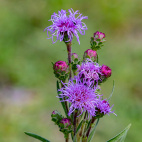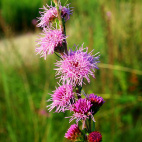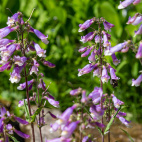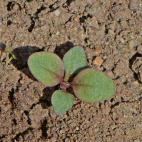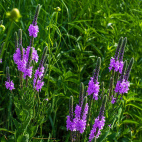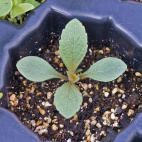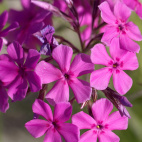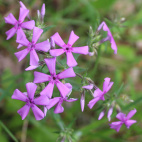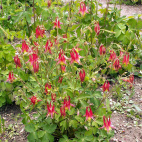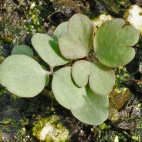Color
Availability
USDA Zone
Region
Type
Duration
Season
Germination
Soil
Sunlight
Height
Use
Narrow Your Search
Color
Availability
USDA Zone
Region
Type
Duration
Season
Germination
Soil
Sunlight
Height
Use
Wildflower Seeds - Northern Region
The Northern region is home to our Canadian friends in the eastern provinces, as well as the northern-most part of the Eastern US. This area is characterized by a long, cold winter with lots of snow, and a short humid summer that only lasts about 3 or 4 months. Most of the area is classified as a UDSA Growing Zone 4 or less, and the species that grow here have interesting ways to perpetuate themselves in spite of the short growing season. There are a lot of forests and wetlands in this region, so adequate moisture is hardly ever a problem. Look up your growing zone to make sure that the Northern wildflower seeds that you want to grow are winter hardy. Alternatively, just order annual flower seeds online so that the plant does not need to make it through the winter, but can reseed itself and come back from seed the next year.
-
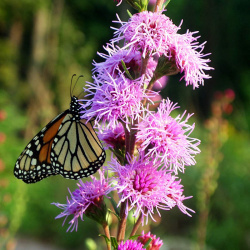 On Sale!
Button Blazing Star Seeds
Liatris aspera
This striking native takes a few years to grow from seed but is very attractive to butterflies, bees, and hummingbirds. Rows of feathery, pink blossoms line the tall stems of this eye-catcher. It is successfully used as a summer bloomer in native prairie plantings.Quick Viewx
On Sale!
Button Blazing Star Seeds
Liatris aspera
This striking native takes a few years to grow from seed but is very attractive to butterflies, bees, and hummingbirds. Rows of feathery, pink blossoms line the tall stems of this eye-catcher. It is successfully used as a summer bloomer in native prairie plantings.Quick ViewxButton Blazing Star Seeds
Liatris aspera
This striking native takes a few years to grow from seed but is very attractive to butterflies, bees, and hummingbirds. Rows of feathery, pink blossoms line the tall stems of this eye-catcher. It is successfully used as a summer bloomer in native prairie plantings.
$3.75 Pkt - $48.00 / Oz -
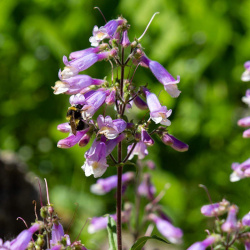 On Sale!
Hairy Beardtongue Seeds
Penstemon hirsutus
These pretty lavender blossoms develop on downy stems. Hummingbirds, bees, and butterflies are all captivated by the engaging tubular flowers. The plant's unusual name comes from the fuzzy tongue in each open bloom.Quick View$3.48 Pkt - $21.00 / Oz
On Sale!
Hairy Beardtongue Seeds
Penstemon hirsutus
These pretty lavender blossoms develop on downy stems. Hummingbirds, bees, and butterflies are all captivated by the engaging tubular flowers. The plant's unusual name comes from the fuzzy tongue in each open bloom.Quick View$3.48 Pkt - $21.00 / Oz -
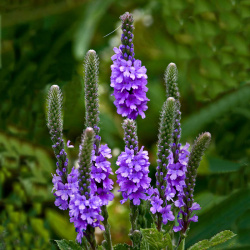 On Sale!
Hoary Vervain Seeds
Verbena stricta
This is the hairy member of the vervain family that sports larger flowers than the cousins. It also is different in that it thrives in dry soils, instead of the damp stuff that the cousins prefer. But like the cousins, this native perennial does attract butterflies and pollinators.Quick Viewx
On Sale!
Hoary Vervain Seeds
Verbena stricta
This is the hairy member of the vervain family that sports larger flowers than the cousins. It also is different in that it thrives in dry soils, instead of the damp stuff that the cousins prefer. But like the cousins, this native perennial does attract butterflies and pollinators.Quick ViewxHoary Vervain Seeds
Verbena stricta
This is the hairy member of the vervain family that sports larger flowers than the cousins. It also is different in that it thrives in dry soils, instead of the damp stuff that the cousins prefer. But like the cousins, this native perennial does attract butterflies and pollinators.
$3.48 Pkt - $12.65 / Oz -
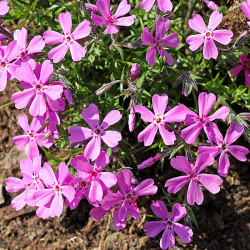 Store in the Fridge
Prairie Phlox Seeds
Phlox pilosa
Usually bright pink, these scented blossoms stud the prairie like so many gems. This native perennial grows on sandy soil in the wild but can be adapted to most garden soils that are not too wet. It takes a green thumb to grow this one.Quick View$3.96 Pkt - $240.00 / Oz
Store in the Fridge
Prairie Phlox Seeds
Phlox pilosa
Usually bright pink, these scented blossoms stud the prairie like so many gems. This native perennial grows on sandy soil in the wild but can be adapted to most garden soils that are not too wet. It takes a green thumb to grow this one.Quick View$3.96 Pkt - $240.00 / Oz -
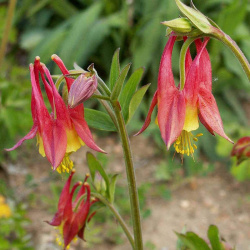 Wild Columbine Seeds
Aquilegia canadensis
Especially attractive to hummingbirds, this wildflower is a perfect choice for nature-lovers. The delicate red and yellow blossoms can grow in the open garden, but they seem to do better with some shelter and shade.Quick View$3.48 Pkt - $26.00 / Oz
Wild Columbine Seeds
Aquilegia canadensis
Especially attractive to hummingbirds, this wildflower is a perfect choice for nature-lovers. The delicate red and yellow blossoms can grow in the open garden, but they seem to do better with some shelter and shade.Quick View$3.48 Pkt - $26.00 / Oz
The Northern region is home to our Canadian friends in the eastern provinces, as well as the northern-most part of the Eastern US. This area is characterized by a long, cold winter with lots of snow, and a short humid summer that only lasts about 3 or 4 months. Most of the area is classified as a UDSA Growing Zone 4 or less, and the species that grow here have interesting ways to perpetuate themselves in spite of the short growing season. There are a lot of forests and wetlands in this region, so adequate moisture is hardly ever a problem. Look up your growing zone to make sure that the Northern wildflower seeds that you want to grow are winter hardy. Alternatively, just order annual flower seeds online so that the plant does not need to make it through the winter, but can reseed itself and come back from seed the next year.






